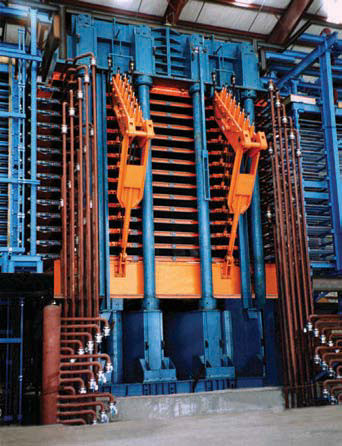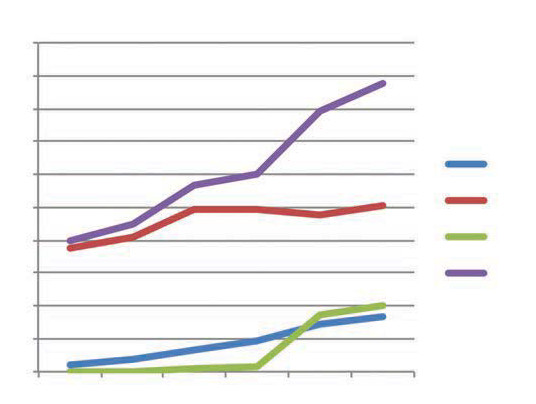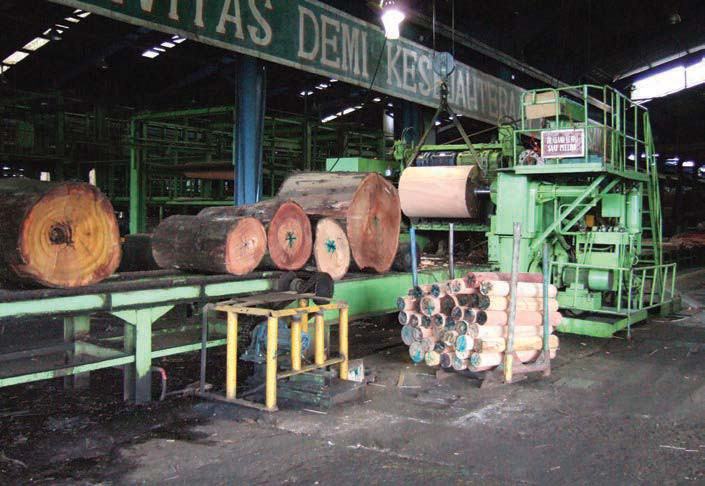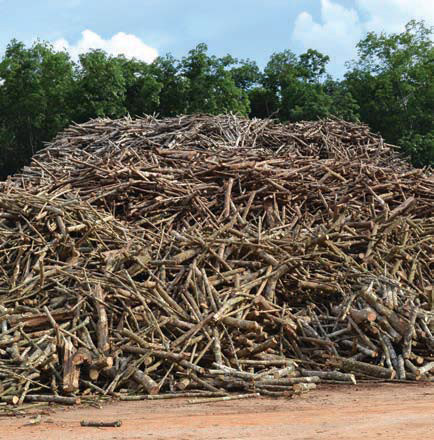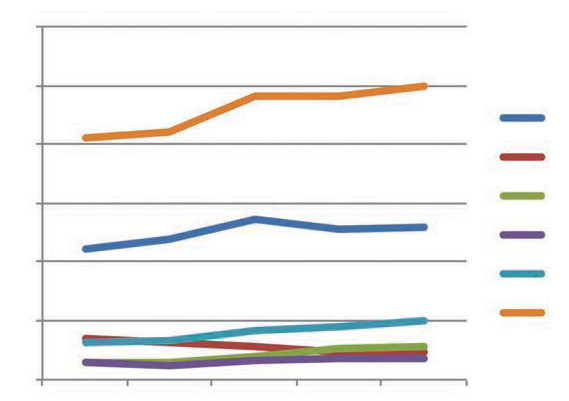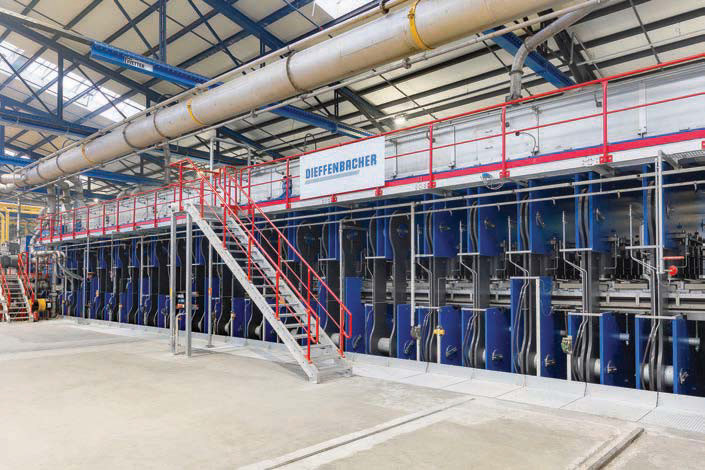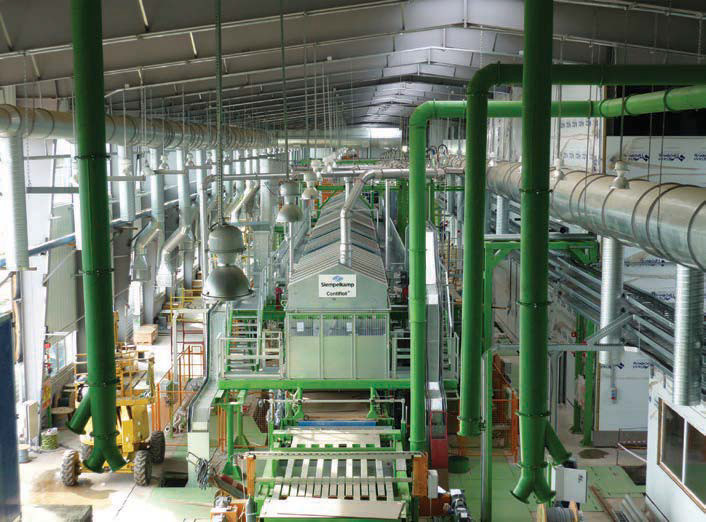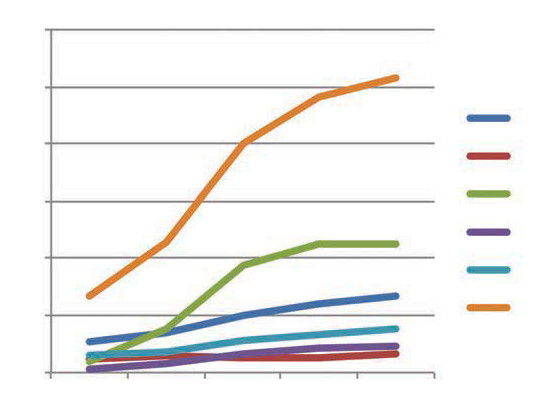Developments in the industry, 1995-2018
8 February 2019As he nears the end of his second tenure as full-time Editor of WBPI, Mike Botting looks back on his 22 years’ involvement with the panel business and summarises the major changes which he feels have shaped, improved, and sometimes threatened, that industry
After spending 20 years in the UK timber trade, in buying and selling roles, in 1993 I was offered the position of markets editor with WBPI’s sister magazine, Timber Trades Journal (TTJ), where my knowledge of the timber trade was put to good use.
The position of editor on WBPI became vacant in 1995 and I was appointed to that role, while still retaining my role as markets editor of TTJ. However, it proved impossible to carry out both roles properly, so I moved to working solely on WBPI in 1996.
Over the following 22 years, with a gap for my semi-retirement in July 2016, and subsequent re-appointment in June 2018, I have been privileged to travel extensively around the world, visiting both panel mills and machinery manufacturers. This has given me the opportunity to see at first hand what 'makes the industry tick' and how its needs and demands have changed over the years.
It has also made me realise what a pleasant and welcoming industry the world of panel manufacturing is.
Of course, panel manufacturing capacities have increased dramatically in those 22 years, as has the need to produce those panels more quickly – and to ever-higher standards of panel quality.
Inevitably, such increasing demand created many more challenges for the industry: Firstly, it put strains on the raw material supply and this led to many innovations in using different raw materials – and in maximising the use of traditional ones.
In the mid-1990s, the panel industry also had to contend with misinformed attacks on its environmental credentials (by the 'Tree Huggers'). Indeed, in the UK at that time, major specifiers of public sector infrastructure shunned wood, using plastic instead wherever possible: particularly for window frames.
How things have changed! Or have they? Even today, it still seems necessary to tell the panel industry to shout much more loudly about the sustainability of its products and their benefits over plastic, steel, brick and concrete. However, at last the public is, I believe, getting the message about the sequestering of carbon in wood products, instead of regarding the felling of any tree as some sort of environmental crime. Of course in tropical rainforests they may have a point, but not in mainly temperate, sustainablygrown, trees used by the panel industry.
The biggest threat to wood supply today, however, is the subsidising of power stations to burn wood for energy, making prices rise to unsustainable levels for the panel industry.
Another battle which the industry has had to fight in recent years is the gaseous emissions from wood products/panels themselves, which became an increasing focus of regulation, particularly concerning volatile organic compounds (VOCs), the most famous of which is – rightly or wrongly – formaldehyde. My personal belief is that this was over-hyped by the World Health Organisation due to one, deeply-flawed, piece of scientific research in the US. However, we are where we are today.
The glue/resin manufacturing industry has worked very hard to dramatically reduce the formaldehyde emissions from resins used in panels, which can now reach zero if the right resin is used.
At the same time, the resin industry had to address demands for ever-higher production capacities of panels, while maintaining their vital mechanical properties.
Of course wood does contain – as does all living matter (including humans) – natural levels of formaldehyde and even this level is under attack in some quarters. Perhaps it is best not to mention terpenes, or other VOCs present in natural wood, many of which give it the natural odour that people generally love.
To put what I have said about the increasing demand for, and production capacity of, wood based panels into perspective, it is perhaps helpful now to look at where the industry has come from and what capacities are currently being produced, globally (see graphs).
Veneer based products
Plywood is by far the oldest-established panel product.
Veneer is said to have been invented by the ancient Egyptians, while plywood was found in ancient Greece and Rome!
The technology of plywood manufacture, like that of composite panels, has come on in leaps and bounds over the years.
Vision systems to identify and patch veneer defects in a split second, and automation of the whole process, has transformed the efficiency of plywood production-and quality of the panels produced.
Due mainly to its very long history, and to the longevity of much of the machinery used in its production, compiling accurate figures for global production of a panel that is produced on every continent is extremely difficult and we have not yet mastered this industry in our WBPI capacity surveys, as we have with Particleboard, MDF and OSB.
However, suffice it to say that the largest volumes of this high-strength and versatile plywood panel are produced in North America, Finland, Russia, South America and China.
Germany, France, Italy and Latvia also have significant capacity, but these countries tend to produce more specialised panels.
Although not used as a panel, laminated veneer lumber (LVL) and parallel strand lumber (PSL) are made as panels, with a similar principle of construction to plywood, and then cut into building components.
Particleboard
Also widely known as ‘chipboard’, this panel was probably first produced commercially in the late 1940s, making it the second-oldest panel product still in mass production.
The particleboard of today is, of course, a world away from those early panels, which were often laid up by hand (I believe a few tiny mills in China still do this today).
Due to its formation from layers of small wood chips glued together, it has limited structural integrity but is of course extensively used in furniture production and in supported flooring panels.
Particleboard has the great advantage that it can be made from recycled and lower-grade wood. Hence poorly-forested countries, such as Italy, have been able to build a significant particleboard-making industry and led the world in utilising wood recycling technology. Ever-moresophisticated methods of sifting and sorting what is often contaminated material have greatly increased its acceptance.
It can be seen from the accompanying capacity graph that “All Europe” is way ahead of other regions in particleboard and peaked in 2010, with a capacity in 2017 of just over 51 million m3.
North American capacity declined over the period, probably due to ageing machinery and a lack of investment in updating it.
China is beginning to show growth at the end of the period (2000-17) and this is continuing, with several new lines currently being added, after some years of concentration on building MDF capacity.
MDF
The invention of MDF was much more recent, with what could be called the first board being produced in the US in 1966.
The first commercial production of MDF took place in 1974, when the brand ‘Medite’ MDF was launched onto the market from a purpose-built production line in Medford, Oregon, US. Now the furniture industry had an alternative to particleboard – and one which was developed into a 3-D mouldable board. Then we saw moisture resistant MDF, opening further new markets.
Soon, due to the versatility of the continuous press, we also had HDF and the revolution that was laminate flooring; and ultra-thin HDF.
We can see from the accompanying MDF graph that there is a very different story for MDF versus particleboard.
China’s capacity has soared from under four million m3 in 2000 to nearly 45 million m3 in 2017. It should be said that accurate capacity figures for this country are extremely difficult to obtain and figures produced by other organisations, such as the FAO, I know differ widely from ours. A degree of estimation is thus inevitably required, but we feel that the WBPI figures are not too far out.
With the exception of North America, even though that is where MDF began, all other regions have grown MDF capacity over the same period.
OSB
It could be said that OSB, standing for Oriented Strand Board is a more recent invention, too.
However, this panel began life, again in the United States, as ‘Waferboard’ and today’s OSB is a development of that simpler concept. The difference? Essentially, wafer board was not developed as a proper structural board and had an homogenous composition of thin rectangular wood flakes.
What OSB brought to the table was the concept of engineering and orienting larger flakes in such a way that they imparted greater rigidity and strength to the board. It also developed into a layered board, with the flakes running perpendicular to each other in consecutive layers. Here, in principle, there was a similarity to the structure of plywood with its alternating veneers. Once moisture resistance was added to OSB, through the resin (phenolic or pMDI), it became a serious competitor to plywood, particularly in timber frame housing.
The total global capacity for OSB has risen from less than two million m3 in 1996, when it was really only made in North America, to nearly 44 million m3, globally, in 2017.
This increase was largely driven by Europe, which rose from less than one million m3 in 1996 to nearly 8.4 million m3 in 2017. This continent made a slow and faltering start in market acceptance, but has shown dramatic growth in recent years, most of it in eastern Europe, and it looks set to continue growing. There are also two major additions recently started up in western Europe, and not included in our graph, at Smartply in Ireland (additional 150,000m3) and Norbord in Scotland (additional 290,000m3).
Meanwhile, after a long wait, Asia has joined the ranks of serious OSB producers, particularly in China, where more capacity is planned in 2018 and beyond.
We can see from the foregoing graphs that production of all three composite panel types has increased steadily over the years, driven not only by increased demand for the well-known panels, or ‘market pull’, but also by the development of new applications and panel constructions, or ‘market push’.
We shouldn't forget wet-process fibreboards – hardboard and insulation board – but these are produced in relatively small volumes today and the waste water presents an environmental problem for the manufacturers, with the added expense of effluent treatment.
Dieffenbacher and Siempelkamp’s developments and innovations in alternative panel types have had a major influence in creating that ‘market push’ I mentioned, as we shall see later.
History of production machinery
The continuous press is one obvious example of a machine where we have seen major technological changes and these, of course, are ongoing.
The preceding single- and multi-daylight ‘cycle press’ systems had their limitations, although many older presses are still in production around the world today, mainly for plywood and OSB production (in N America).
However, a new 14-daylight press has recently been supplied by Dieffenbacher to Martco OSB in Corrigan, Texas.
The first continuous press was developed by a Mr Bartrev in England in the 1950s. This was based on a system of rotating hot platens and was not really a success as it lacked flexibility and was too complex, looking rather like early tank tracks!
Küsters developed a more modern, longer, double-belt continuous press in 1977. Many Küsters presses are still in operation, but it also suffers from some excess complexity, notably in its chain-link system to carry the steel belt, and a prodigious thirst for lubricating oil.
We mustn’t forget the Mende-type continuous press, but this is a calender type and also has its limitations. It is, however, still manufactured for thin board production.
Heralding major new developments of the continuous press, Siempelkamp launched its first ContiRoll in 1985 and Dieffenbacher its first CPS in 1990.
In the mid-1990s we saw very significant developments of the continuous press concept, perhaps most noticeably in the control room, where synoptic controls were replaced with flat screen monitors. Continuous presses have also got longer and longer, with the record standing at over 60m. That’s a lot of weight, too: I will never forget seeing a very new continuous press in Northern Sumatra, Indonesia in the 1990s, where inadequate foundations meant it was slowly sinking into the marshy ground!
Increasingly sophisticated information systems for the control room have, of course, continued to develop since then.
However, it’s no good having a faster, more efficient, continuous press if you can’t feed it with raw material at a sufficient rate. Thus forming and gluing systems have had to keep up with those advances.
Other major developments have come in the form of electronic on-the-production-line quality controls to detect blisters, thickness, density and foreign bodies in the mat.
Spark detection and extinguishing systems were also brought to the market.
Raw material preparation, forming and gluing systems, have also been developed to press, continuously, ‘novel’ raw materials such as wheat straw, rice straw and other challenging materials.
The latest development in the control of the production process is ‘Industry4.0’, in which the sensors on the line report back to the central computerised management system, resulting in prediction of board properties and removal of defective areas of a mat in a split second, automatically. Changes to thickness and density of the panels being produced can now also be accommodated much more quickly and economically.
A major change for both Siempelkamp and Dieffenbacher is the way in which they have, over the years increased, step-by-step, the number of components of the production line which they can supply direct. Today, by a combination of takeovers and inhouse developments, both companies can offer all the equipment necessary for a line from within their own company’s resources. This makes such automation of the line that much simpler to enact.
Both companies also have significant manufacturing capacities overseas, notably in China, bringing their German technology and quality to more distant parts of the globe.
With all this automation, and the possibilities offered by Industry4.0, will the time come when there are no human beings involved with the control of the line – or maybe one with a good e-book to read?
Siempelkamp thinks so and is working towards this goal. Dieffenbacher, on the other hand, is less convinced that totally autonomous control is what the customers really want.
Beyond Industry4.0 is connection of the production line to ‘The Cloud’. This is perhaps a little worrying as ‘The open Cloud’ and ‘The Internet of Things (IoT)’, which Homag, for example, believes its customers want is, in fact, open Internet, which is not inherently secure. As with all the technological advances in Smart Technology, such as ways to make payments with your smartphone, etc, etc, it seems the hackers soon find ways to use these advances to their own advantage. Security of information will have to be a major consideration for companies offering Cloud-based and IoT production line controls in this digital age.
Twenty-two years have gone by too fast and I feel privileged to have been associated with the panel industry during such an interesting period in its history. But I feel that the digital future is going to bring even more exciting advances – and challenges – for our industry…..
